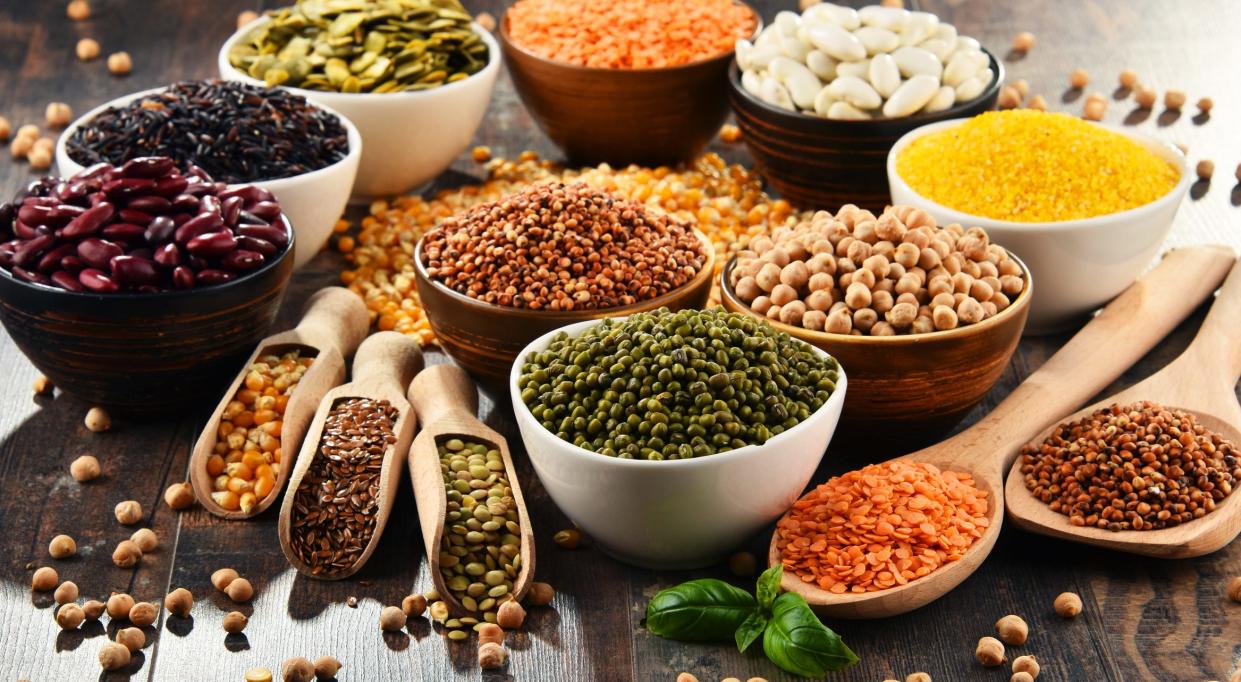Nutrition for Today: Ever hear of a flexitarian diet? It allows vegetarians meat and dairy

Support local journalism. A digital subscription is incredibly affordable and makes you the most informed person around. Click here and subscribe today.
We’ve all heard about the health benefits of adopting a vegetarian lifestyle.
A well-planned vegetarian diet can provide all the nutrients we need and can provide protection against many chronic diseases Americans suffer from.
A vegetarian diet has been proven to reduce the risk of heart disease, as it tends to be low in saturated fat and does not contain cholesterol (cholesterol is exclusively found in animal products).
It promotes weight loss by including plant-based proteins, which are more filling and contain fewer calories than animal proteins.
This style of eating reduces the risk of developing type 2 diabetes and lowers the risk of cancer.
Susie's previous three columns:
Got milk? Calcium 101 — From milk to sardines, everything you need to know
What is a superfood? Find out so you can improve your overall health
Are Carbs public enemy No. 1?Absolutely not. They're really important
And, of importance to many people today, it is good for the environment, leaving a low carbon footprint.
But many people are reluctant to embark on this lifestyle if it means never eating meat again.
I, for one, wouldn’t want to have to give up an occasional charcoal-grilled steak or juicy cheeseburger.
The downside of vegetarianism that scares some people away is the real risk of developing nutrient deficiencies by cutting out two major food groups: meat and dairy.
Essential nutrients found in these food groups include protein, calcium, vitamin B12, zinc, iron, omega-3 fatty acids and vitamin D. These can be challenging to replace in a vegetarian diet.
The protein in animal products is a higher biological value than that found in plant proteins. This means that the body absorbs animal protein more efficiently. It takes more plant protein to satisfy our needs than with animal protein.
Calcium is especially rich in dairy foods, so vegans need to be a bit creative to get enough in a plant-based diet.
Vitamin B12 is exclusively found in animal products. Vegetarians must take supplements of this vitamin or consume fortified foods to meet their needs.
Iron and zinc are minerals that are especially rich in red meat (beef and pork). Although we do find these minerals in plant proteins, it is not as abundant, and is not absorbed as efficiently.
Omega-3s are abundant in fish and seafood.
Many vegetarians opt to include these foods in their diets. But if you eat a vegan diet, with no animal products at all, you’ll need to utilize other sources such as flaxseed, walnuts, canola oil, soybeans, and green leafy vegetables.
Like protein and iron, the omega-3s in plant foods are absorbed much less efficiently than the animal sources.
Vitamin D is found in milk and egg yolks, foods strict vegetarians avoid. Exposure to sunshine allows the body to make its own vitamin D through the skin, so eating a vegetarian diet doesn’t always mean you’re going to be deficient in vitamin D.
So, how do you reap the benefits of a vegetarian lifestyle without giving up the foods you love?
You can adopt a flexitarian diet.
Flexitarian is a term coined by Registered Dietitian Dawn Jackson Blatner in her 2009 book called “The Flexitarian Diet: The Mostly Vegetarian Way to Lose Weight, Be Healthier, Prevent Disease and Add Years to Your Life.”
Flexitarian is a combination of the words flexible and vegetarian. You might call it a semi-vegetarian diet, a part-time vegetarian diet, or vegetarian-ish diet.
Whatever you want to call it, it provides an alternative to following a strict vegetarian diet.
A flexitarian diet is a healthy diet without strict rules. It is centered on plant foods with the occasional inclusion of meat and dairy.
It includes lean meats and fish, but most of the protein is provided from plants such as legumes, edamame, tofu, nuts and nut butters and high-protein grains like quinoa.
A flexitarian diet is rich in whole grains, vegetables, fruits, dairy and plant milk, eggs, nuts and nut butters, seeds, tofu, and healthy fats such as olive and canola oil.
It limits animal proteins (chicken, turkey, red meat, pork, and seafood), processed refined grains (white bread, white pasta, white rice), animal fats (butter, whole milk, and cream), and highly processed foods and beverages such as soda chips and cookies.
A healthy and balanced flexitarian plate is one-fourth lean meat, poultry, fish, beans or tofu, one-fourth whole grains (brown rice, quinoa, whole grain pasta or starchy vegetables), and one-half fruits and vegetables.
An easy way to get started with a flexitarian diet is to go in stages.
Start off eating meatless meals two days per week. On your meat days, limit portions to 3 ounces.
Next, move on to increasing your meatless days to three to four per week.
Ultimately, you can progress to a full flexitarian diet, eating a meatless diet five days a week, and meat only twice a week.
This way you can have the best of both worlds. You get the health benefits of a vegetarian diet while still enjoying the occasional piece of meat and dairy.
Sounds good to me. How about you?
Susie Bond is a Registered and Licensed Dietitian/Nutritionist in private practice. Contact her at NutritionistOnCall@gmail.com
This article originally appeared on Florida Today: Vegetarian diet can be good, but know how to replace nutrients of dairy, meat

